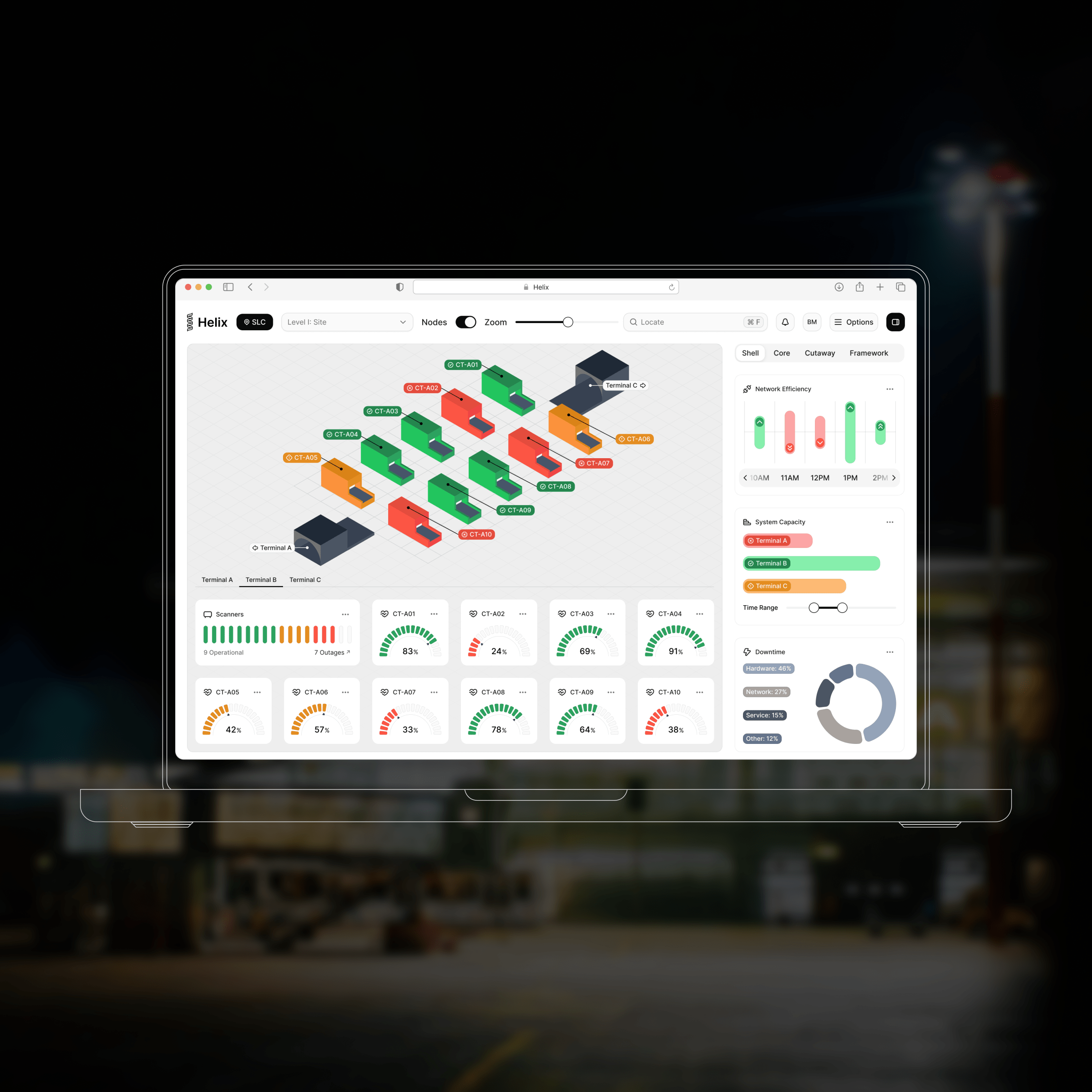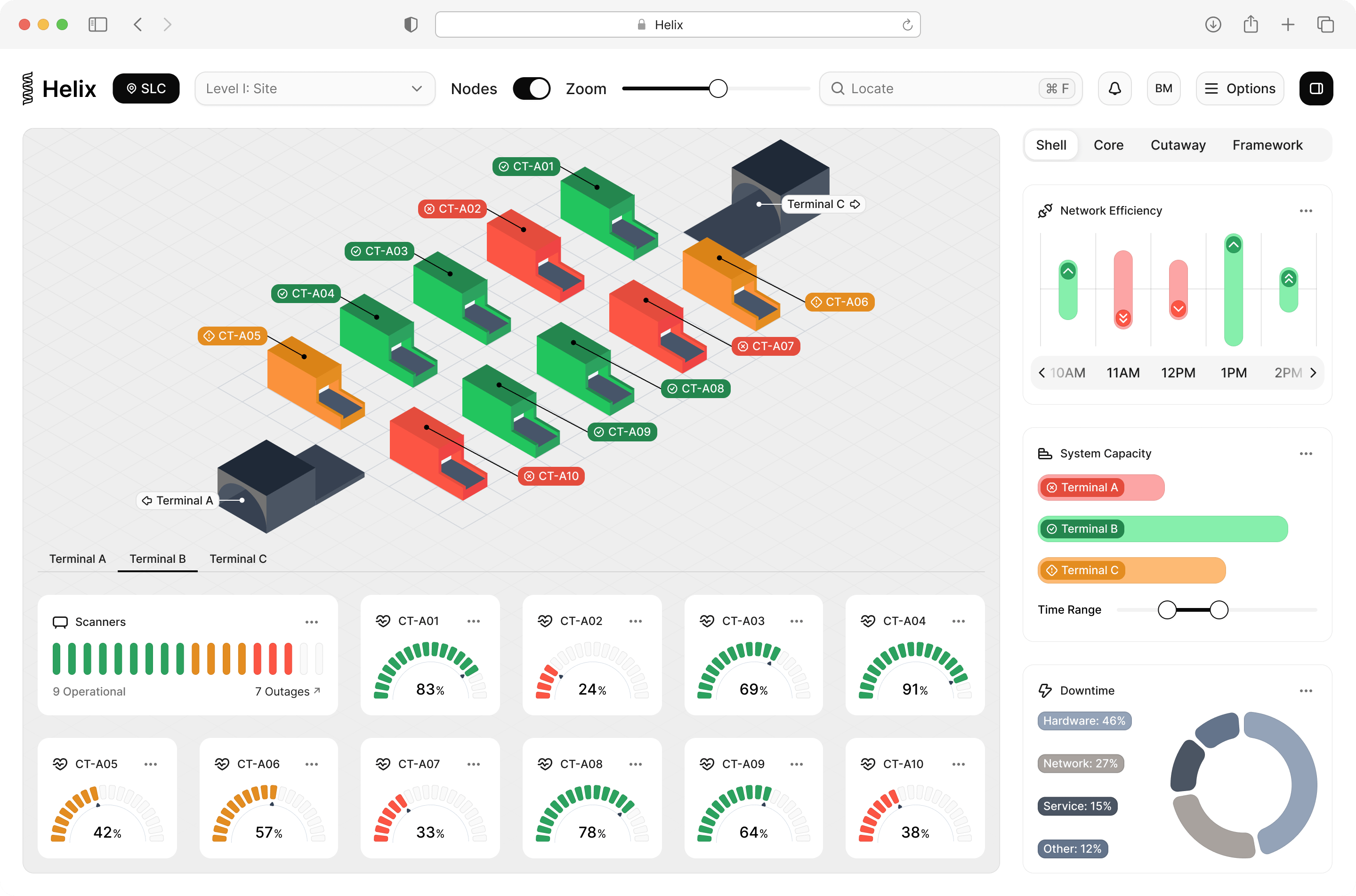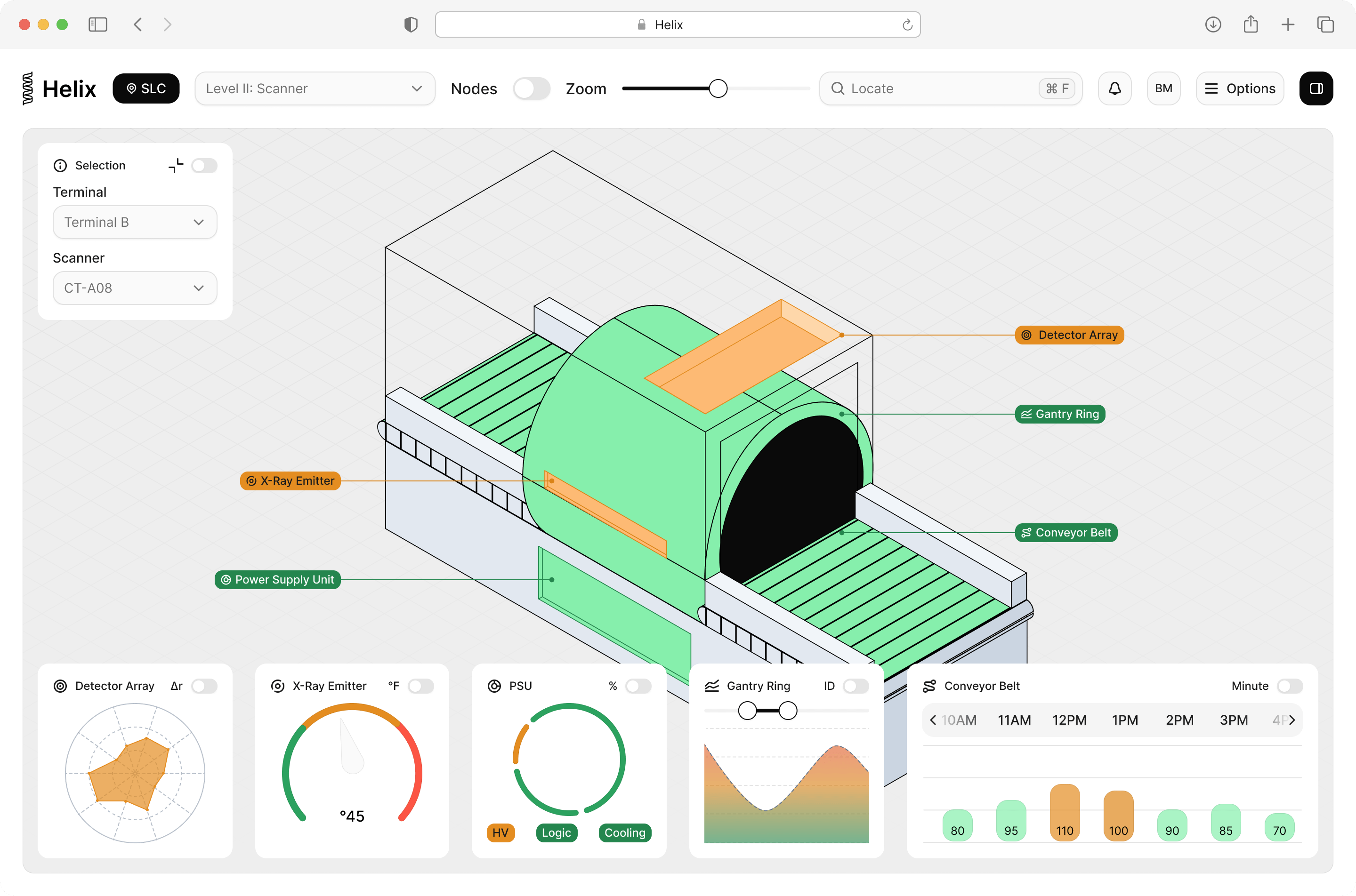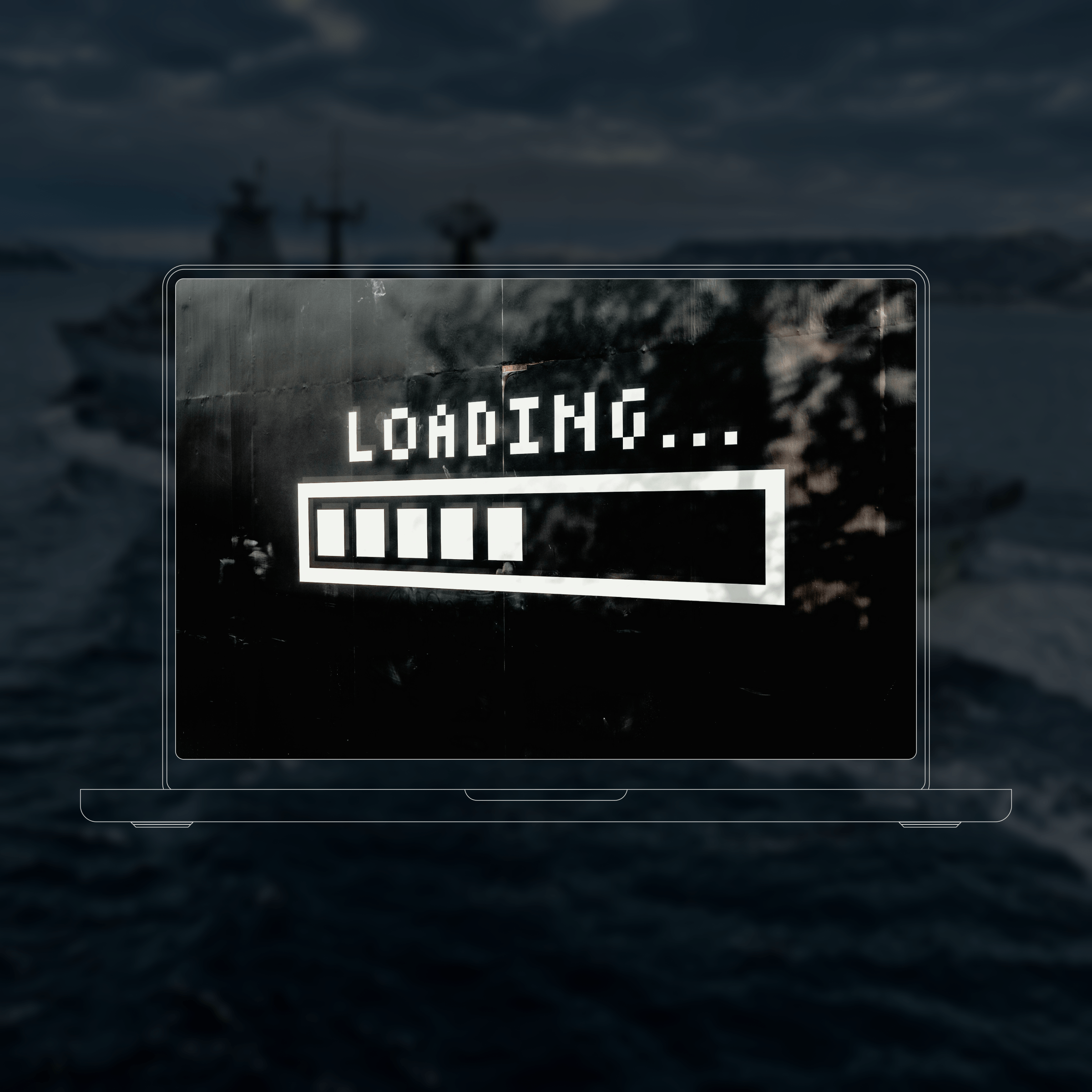
Helix
Diagnostic platform with isometric visualization for airport scanner maintenance.
Note: Mockups shown are redesigned representations created for portfolio purposes. Original work is under NDA and remains property of the client.
Discover
At Undisclosed, I led UX design on a diagnostic platform built to replace command-line interfaces with an intuitive visual system for airport scanner maintenance. Through contextual inquiry, task analysis, and structured interviews with maintenance staff, we uncovered recurring frustrations: excessive cognitive load, reliance on institutional knowledge, and inefficiencies in isolating faults. Field observations showed engineers losing time navigating layered command outputs rather than focusing on actual repairs.

Define
Using affinity mapping and workflow synthesis, we reframed the design challenge from “presenting raw system data” to “orchestrating actionable insights.” Maintenance personas emphasized the need for clear entry points into system status, with progressive disclosure for deeper technical layers. Human factors analysis highlighted the value of spatial cognition, guiding our decision to employ isometric visualization over traditional linear dashboards.

Develop
I facilitated cross-disciplinary design workshops with engineers, mathematicians, and human factors specialists. Together we prototyped a layered isometric interface that allowed zooming into components with precision. Early wireframes emphasized cognitive efficiency, reducing unnecessary navigation and supporting rapid pattern recognition. We built a design system around reusable diagnostic modules, enabling consistency across multiple scanner types and future hardware iterations.
Deliver
The platform underwent iterative usability testing in simulated maintenance environments. Using SUS surveys, eye-tracking, and task completion benchmarks, we recorded a 42% reduction in average fault-identification time and a 31% decrease in false-positive reports. Eye-tracking confirmed smoother scan paths across the interface, validating the reduced cognitive overhead. Training programs and documentation were developed to accelerate adoption, with administrators reporting quicker onboarding of new technicians.
Impact
Deployment at external testing facilities confirmed broad improvements in efficiency and reliability. Post-deployment surveys showed 88% of engineers rated the system as more effective than prior tools, and SUS scores improved from 58 to 86. Beyond immediate diagnostic gains, the project established a scalable diagnostic framework, supporting operational resilience and reducing downtime costs. My leadership ensured not only user-centered outcomes but also organizational alignment across technical and compliance stakeholders.
